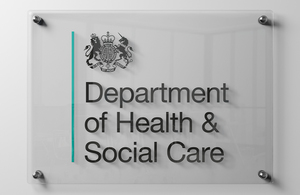Almost £3.5 billion spending increase on front line services
The NHS has saved £1.5 billion since last year by cutting the number of managers, and reducing expenditure on wasteful IT projects. Spending…

The NHS has saved £1.5 billion since last year by cutting the number of managers, and reducing expenditure on wasteful IT projects.
Spending on frontline NHS services has increased by £3.4 billion (or 3.5%) in cash terms compared to last year. This means more money for running hospitals, hiring doctors, and treating patients.
In line with the coalition agreement, in the 2010 Spending Review settlement the Government provided the NHS with a real terms increase in its budget of 0.1% in 2011/12 and for each of the three subsequent years. Due to faster than expected savings from bureaucracy and £400 million saving on IT projects, PESA figures released today show that in real terms NHS spending has reduced slightly by 0.02%.
The NHS is in robust financial health. Primary Care Trusts and Strategic Health Authorities have reported a surplus of £1.6 billion, which will be carried forward and made available in 2012/13. This represents a 3% increase in funding available to the NHS relative to last year.
Health Minister Simon Burns said:
“This Government has met its promise to provide a real terms increase in the health budget.
”The amount spent on frontline services in 2011/12 increased by £3.4 billion in cash terms or 3.5% compared to the previous year. While spending has increased on patients, we have reduced inefficient spending, saving over £1.5 billion on bureaucracy and IT.
”This money has not been lost but is being carried forward for next year. Our increases in frontline spending are already showing results - waiting times have been kept low, there are more doctors, the NHS has performed more diagnostic tests and planned operations, and infections have been reduced even further.”
Notes to editors
- Figures in PESA are based on the 2011/12 financial position. These may change when the end of year accounts are published later this year.
- The latest PESA figures can be accessed on the Treasury website